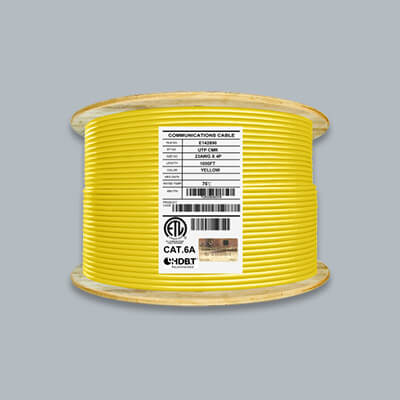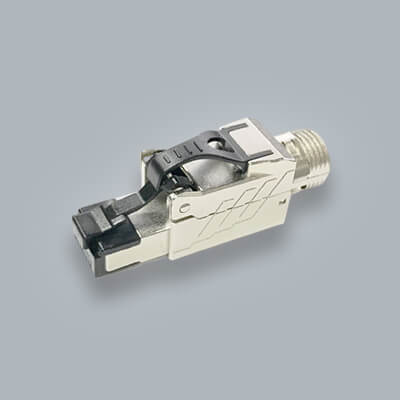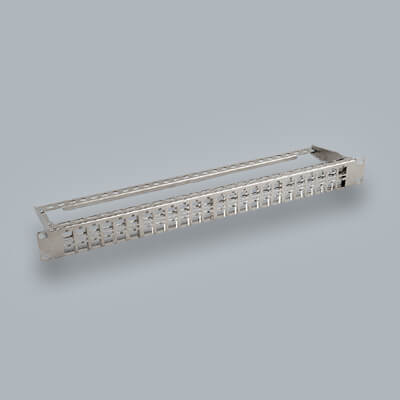Difference between Cat6 vs Cat7 Cable?

Getting to know all the different cable categories can be no easy task. Each different cable has different speeds and capabilities which help in making a purchasing decision. To better help understand these two cable categories we will cover what is the difference between Cat6 vs Cat7 cable?
What types of differences are there between Cat6 and Cat7 Cables?
Cat6 and Cat7 cables come in many different forms. Some of the most common cables types you will see them in are:
Cat6 or Cat7 stranded cables (cm rated) are cables which you are probably most familiar with. These are the cables that you see around the office connecting your ethernet ports to your computers or printing devices. In your home you will see them between your modem or router or connected to your favorite gaming system. These types of cables mostly come in patch cord form. Cat6 or cat7 patch cords cables are flexible shorter length cables that are cut down to your required size. They can range from anywhere between less than a foot to over 100 feet.
CMR Rated cables are known as riser rated cables. These cables mostly come in bulk sizes ranging from 250 feet to 1000 feet. Cat6 or Cat7 CMR rated cables have a higher fire retardant rating because they are made to be put in the walls of your home or commercial buildings. Risers are areas connecting floors in buildings and this type of cable is great for this. If you are looking at Cat6 or Cat7a riser cable you will most likely see it in larger length bulk sizes. This is because this type of cable is meant for longer runs and needs to be in solid form. Click here for more information on solid cables.
Cat6 or Cat 7 CMP rated cables are known as plenum rated cables. Plenum areas are sections in your home or commercial building where air flow is present. Areas that would circulate the air such as AC systems would be an example of plenum rated areas. This type of cable is constructed with the highest fire retardant rated materials making it suitable for home, office and buildings. You need to have plenum rated cable for these areas because their jackets do the best job of stopping the spread of fire and emit less toxic smoke.
Quality is definitely important when it comes to these types cables and that is why we always recommend to choose certified and third party tested cables. Not only will they follow building code but they will save you in the long run knowing that you are getting solid copper cables.
Now that we have gone through an over of the different types of jacket materials these two cables come in, let's get into more of the performance aspects.
Cat6 and Cat7 structure types

Cat6 cable comes in two different forms: shielded and unshielded. The type of structure for this cable has to do with where your are installing it. Unshielded is for everyday use in residentials and commercial buildings. Shielded is for areas with EMI (Electromagnetic Interference).

For Cat7 cable this will only come in a shielded version. Cat7 cable needs to be shielded to handle the higher frequencies of its specification.
What is the speed difference of Cat6 and Cat7?
These two cables do a great job of giving you enough speed to power most of your devices and applications. Whether in your home or office Cat6 and Cat7 can be a great choice.
Cat6 cables are rated for:
- 1Gb
- 10Gb at shorter lengths (33 - 55m)
Cat7 cables are rated for:
- 10Gb
These ratings are good up to the maximum distance which we will go over in just a moment. As you can see Cat7 cables do a great job of giving you a boost in performance. Their 10Gb's of data rate transmission packs a lot of punch and gives you the power to move a lot of data.
What is the maximum distance you can run Cat6 and Cat7 cable?
For a majority of the category cables you will find that the maximum distance according to TIA standards to run cable is 328 feet (100m). This is no different here. Cat6 and Cat7 cables have a recommended channel length of 100m or 328 feet.
Performance at shorter distances?
Cat6 cable has been improved to run 10Gb at shorter lengths making this cable comparable with Cat7. The thing to keep in mind here is that for 10Gb on Cat6 cable, conditions needs to be ideal. Cat6 will do just fine with 1Gb at short and longer distances. This can mean a couple different things such as proper connections, distance and environment. If you decide that 10Gb is what you want then Cat6 can be fine (<55m). But for channel consistency and the ability to have 10Gb over longer runs then Cat7 will be the recommended cable.
Do Cat6 and Cat7 cables use different connectors?
Cat6 and Cat7 cables will use the same types of connectors. The type of connector depends on the installation. Most of the time you will be using an RJ45 or keystone jack. For Cat6 cable which can come in shielded or unshielded versions you simply want to match up the shielding types on the cable and the connector. For Cat7 cable which only comes in shielded versions to handle the higher frequencies it needs a whole shielded channel. For optimal performance the RJ45's, keystone jacks and patch panels needs to be shielded as well.
Conclusion
Looking at the overall picture for the difference between Cat6 and Cat7 cable you see that there is a large difference with the frequency performance. Both of these cables however are suitable for majority of homes and offices. Cat6 cable is a recommended choice for 1Gb applications because it also gives you a future proofing benefit. The 10Gb speeds up to 180 feet is a great perk to have as well. Ideal conditions aside. Anyone looking for higher end cable will want to consider Cat7 as a choice. But looking at its speed capabilities it's almost identical to Cat6A cables. This is why we recommend if you want to use Cat7 to use Cat6A cables. As they will give you 10Gb speeds up to 328 feet and similar bandwidth capabilities. If you want even more performance then look to Cat7A cables. With Cat7A you get the benefits of double shielding.
Have any more questions regarding this topic? Feel free to leave a comment below or contact us directly at support@infinity-cable.com and we'll be glad to help.
Happy Cabling!






Hi infinity-cable-products.com administrator, Thanks for the detailed post!
Hi infinity-cable-products.com admin, Excellent work!
No problem ! So glad to hear we were able to help. Let us know if there’s anything else we can help with
It was a self explanatory n easy to understand description of cat6, cat6a and cat7, RJ45 cables, regarding their speed, frequency and distance coverage . I am impressed. Big thanks to your support team.
Earlier I was confused about choice of cable. Now It is all clear and I can purchase cat6a cable as per my requirement.
Thanks once again